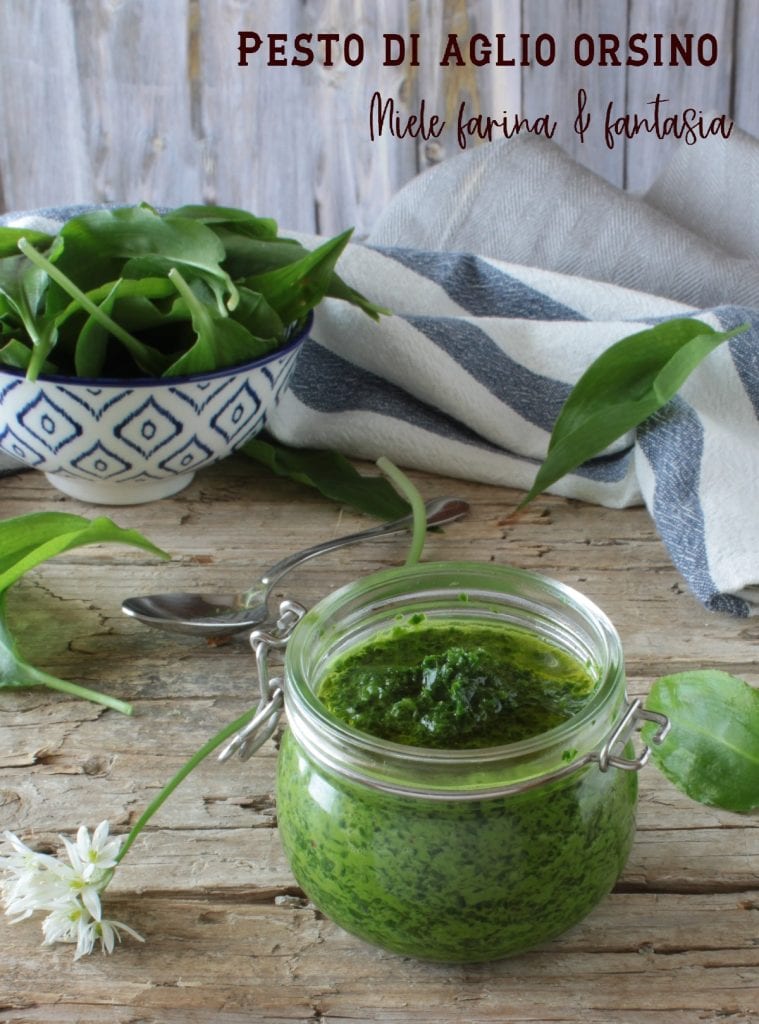Wild garlic pesto is an extremely fragrant, flavorful, easy, and quick cream to make, ideal for accompanying meat or fish dishes whether plain, fried, or roasted, and for seasoning pasta. Wild garlic is an edible aromatic plant that grows spontaneously in forests and humid places, from March to June (but it can be cultivated in pots on balconies by purchasing plants or seeds from specialized stores) and is the wild relative of common garlic. It has a more delicate flavor reminiscent of chives and is more digestible than common garlic. All its parts are edible: stem, leaves, bulbs, flowers, and can be used to prepare decoctions, teas, flavored oils, or to flavor cheeses, savory pies, salads, omelets, pasta, rice, and so on. Wild garlic is a very versatile plant, not only in cooking. It possesses numerous beneficial properties for our body, including antifungal, antiseptic, antioxidant, diuretic action, etc…

- Difficulty: Very easy
- Cost: Very economical
- Preparation time: 10 Minutes
- Portions: 4
- Cooking methods: No cooking
- Cuisine: Italian
- Seasonality: Spring
Ingredients
- 3.5 oz wild garlic leaves
- to taste extra virgin olive oil
- to taste fine salt
Steps
To prepare wild garlic pesto, start by thoroughly washing the leaves, keeping the stalks attached as they are also very aromatic.
Gently pat the wild garlic leaves dry with a cloth and transfer them to a blender or the bowl of an immersion blender.
Start blending, gradually adding the oil in a thin stream, until you achieve the desired consistency, either more rustic and coarse, where the leaves have not been completely pureed, or creamy.
Adjust the salt and voila, the wild garlic pesto is ready to flavor and enrich our savory dishes.
Extra Tip. The version I described is the basic version of wild garlic leaves pesto, but we can add ricotta or robiola, grated Parmesan cheese (which will help make the pesto even creamier and temper the rather strong flavor of wild garlic), walnut kernels, almonds or hazelnuts, sun-dried tomatoes, toasted pine nuts, and so on to make it even more flavorful.
If we want to prepare a larger quantity or if the prepared pesto is left over, we can store it in the fridge in a well-closed sterilized jar.

